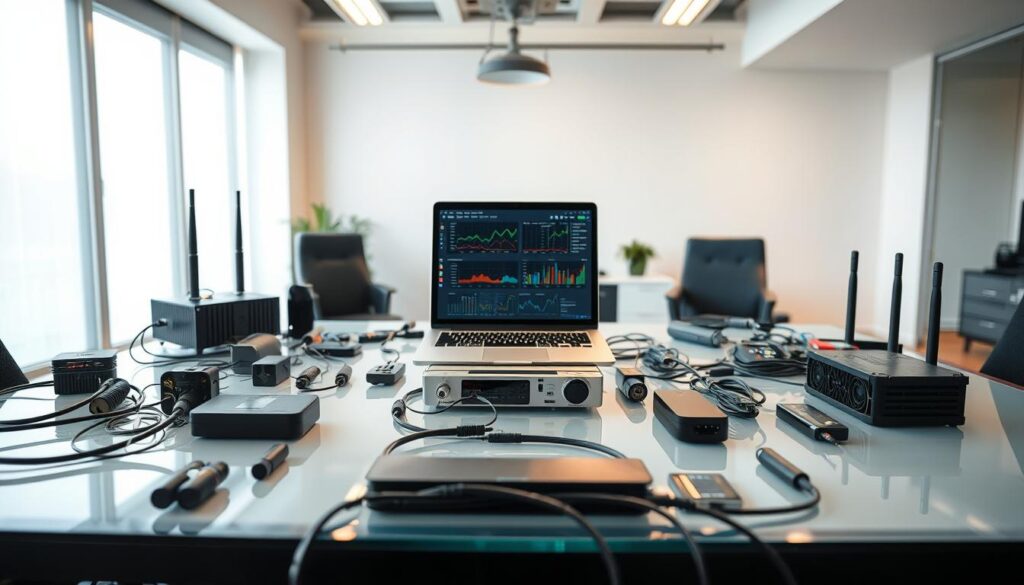Ready to upgrade your home TV? This short 2025 guide helps you compare top UK-friendly services so you can pick fast.
You’ll see clear checks on channels, 4K/FHD quality, free trials, EPG accuracy, and support speed. We highlight three leading picks: SOLID IPTV, IPTVVUK, and G‑IPTV, each offering thousands of channels, reliable 4K/FHD playback, and verified EPG.
Streaming runs best at 25 Mbps or higher for smooth FHD and 4K viewing. We tested real devices—Fire TV Stick, Android TV, Smart TVs, iOS/Android, and desktop—so you know how services behave during peak UK hours.
This intro also explains when a legal iptv app from official stores makes sense, how trials and refunds usually work, and which setup basics protect your account and payments.
Key Takeaways
- Quick 2025 roundup to shortlist providers by channels, quality, EPG, trials, and support.
- SOLID IPTV, IPTVVUK, and G‑IPTV top the list for 4K/FHD, fast support, and accurate guides.
- Target at least 25 Mbps for stable FHD/4K playback on common UK devices.
- Legal app-store services suit users preferring licensed content and simpler setup.
- Trials, refunds, and device compatibility vary—check EPG and support speed before you subscribe.
How to use iptv reviews to choose the best UK service in 2025
Start by checking recent guides that list channel counts, device support, and trial windows so you can test each service on your setup.
User intent: comparing plan costs, trials, and device support
Compare plan costs side‑by‑side and note trial length. A free trial helps you verify peak‑hour stability on your streaming devices and your home network.
Test on your devices — Fire TV Stick, Android TV, iOS/Android, Windows, Mac, and Smart TVs. Aim for a 25 Mbps baseline to secure FHD or 4K playback.
Shortlist criteria for UK viewers: Premier League, EPG, reliability
- Make the Premier League a priority if live football matters; check match‑day channel stability and fast channel switching.
- Evaluate the program guide for schedule accuracy and metadata so you find fixtures quickly.
- Score services on channels offered, uptime, buffering frequency, and support responsiveness during UK peak hours.
- Confirm simultaneous streams, device connection rules, and VOD/catch‑up content for busy nights.
Editor’s top picks for 2025: the best iptv providers to try first
To start your shortlist, focus on providers that deliver wide channel libraries, strong 4K/FHD streams, and fast help.
SOLID IPTV — Channels: 30K+ | Quality: 4K / FHD | Free Trial: Yes | Support: Super-Fast | EPG: Yes
IPTVVUK — Channels: 24K+ | Quality: 4K / FHD | Free Trial: Yes | Support: Super-Fast | EPG: Yes
G‑IPTV — Channels: 28K+ | Quality: 4K / FHD | Free Trial: Yes | Support: Super-Fast | EPG: Yes
Try these three first when you want a reliable iptv service in the UK. Each offers 4K/FHD playback, an accurate EPG, and a free trial so you can test peak‑hour performance.
- Try SOLID IPTV first for a huge channels catalog (30K+) and a trial to validate image sharpness on your devices.
- Choose IPTVVUK if you want a balanced 24K+ lineup with consistent EPG data and responsive support.
- Consider G‑IPTV for 28K+ channels, dependable 4K/FHD streams, and quick help to resolve issues fast.
- Use each service’s free trial to check channel switching, buffering, and catch‑up content during UK evenings.
Quick tip: Log buffering frequency, audio sync, and image quality in a short checklist. Keep one provider as your primary and a second as backup for live events.
What is IPTV in 2025? Internet Protocol Television vs traditional cable or satellite
In 2025, internet-based TV delivers live channels and on-demand content with more flexibility than old-school broadcasts.
Internet protocol television sends video over your broadband instead of using coax or dish links. That means live channels, catch-up shows, and video demand libraries arrive as network streams.
Live channels play like traditional TV, but each channel switch opens a new unicast stream. Time-shifted media gives you catch-up and pause-resume without scheduling recordings.
VOD libraries let you search and resume movies or series anytime. Compared with cable satellite bundles, this model is more device-friendly and often cheaper.
How delivery and reliability differ
- Delivery: uses internet protocol and CDNs to reach TVs, sticks, phones, and desktops.
- Performance: strong CDNs and distributed servers reduce buffering at peak times.
- Choice: licensed app-store services provide predictable access and formal support.
| Feature | Protocol Television | Traditional Cable/Satellite |
|---|---|---|
| Delivery method | Internet protocol via broadband | Coaxial or satellite links |
| On-demand | VOD and catch-up built in | Limited or DVR-based |
| Device support | TVs, sticks, phones, desktops | Mostly set‑top boxes and TVs |
| Cost profile | Often lower and more modular | Higher, bundled packages |
Bottom line: This model gives you more control over what to watch, when, and on which device—ideal for UK viewers who value choice and modern streaming habits.
Our 2025 testing methodology for unbiased iptv reviews

We ran hands-on tests across common UK gear to score performance, stability, and usability.
Testing covers mainstream devices: Fire TV Stick, Android TV boxes, and leading Smart TVs (Samsung, LG, Sony). We also use iOS/Android phones and Windows/Mac browsers so you see real-world results on the kit you own.
Streaming quality and uptime
Peak‑hour checks run between 7–10 PM for 30 days. We log resolution stability (SD to 4K), buffering events, cold starts, and channel switching speed. Results show how services handle British evening demand.
User interface and program guide
The electronic program guide is checked for schedule accuracy and metadata depth. Search, recommendations, and UI responsiveness are scored on both high‑end TVs and lower‑power sticks.
Customer support and trial ease
We time support responses via chat, email, and tickets. We also verify how fast you can sign up, install, and begin a trial. Findings convert to simple scores so you can compare channels, streaming stability, and support across services.
| Metric | What we measure | Why it matters |
|---|---|---|
| Devices | Firestick, Android TV, Smart TVs, mobile, desktop | Shows device compatibility and UI speed |
| Peak performance | 7–10 PM uptime, buffering, switching | Reflects real UK viewing hours |
| EPG & UI | Schedule accuracy, search, responsiveness | Helps you find shows fast |
| Support & trial | Response time, ticket resolution, sign-up friction | Measures reliability when issues arise |
Key features to compare across iptv services in 2025
Prioritize features that shape your evenings: how accurate the program guide is, how many devices can stream at once, and how fresh the on-demand catalog stays.
EPG and catch-up TV
Check the electronic program for schedule accuracy and useful metadata like genre tags and episode descriptions.
Good EPGs include search, filters, and personalization so you find live channels and replays fast. Catch-up windows vary, so confirm how long shows remain available.
Multi-device connections and simultaneous streams
Verify device limits and simultaneous streams. Premium providers often permit 2–5 concurrent connections, which suits multi-room UK households.
Also test UI speed on Fire TV, Android TV, and smart TVs to ensure smooth switching between profiles.
VOD libraries: on-demand movies and series
Compare VOD libraries for on-demand movies, recent series, and how often new on-demand titles arrive.
Look for clear categories, quick search, and reliable playback so catch-up and library browsing stay fast during prime time.
Sports and PPV: reliability for live events
Test live channels stability during PPV and major sports events when server load peaks. Strong CDNs make a big difference in buffering and picture quality.
Check whether the program guide shows clear event start times, league navigation, and if replays or recordings are provided for key matches.
| Feature | What to check | Why it matters |
|---|---|---|
| Program guide | Accuracy, search, personalization | Find shows and manage live events quickly |
| Simultaneous streams | Allowed connections (2–5) | Supports multi-room households |
| VOD freshness | New titles, movie and series updates | Keeps your on-demand content current |
| Live event reliability | PPV stability, CDN strength | Ensures smooth sports and big-event viewing |
Quick tip: Make a short comparison grid capturing EPG depth, VOD freshness, streams allowed, and live event reliability before you subscribe.
Legal IPTV options available on official app stores in 2025
Choosing licensed apps from official stores gives you clear terms, stable channels, and formal customer support. These services cost more, but they trade breadth for predictability and legal compliance.
Examples to consider:
- YouTube TV — 100+ channels, introductory $59.99 for two months then $82.99 per month, 3 simultaneous streams and unlimited DVR.
- Hulu + Live TV — 100+ channels at $82.99 per month with unlimited DVR plus Hulu’s on‑demand library.
- Sling TV — a lower‑channel option (45+ channels) with plans starting at $45.99 per month for targeted bundles.
- Peacock Premium Plus — live sports and WWE options from $7.99 per month.
- Paramount+ — live CBS channels and sports coverage (EFL, Serie A, Champions League) from $7.99 per month.
These streaming services publish transparent channel lineups and support Android, iOS, Fire TV, Roku, Apple TV, Windows, and Mac. You pay through standard credit debit checkout flows and manage subscriptions with reputable billing systems.
Why pay more? Licensed platforms have fixed carriage deals, reliable CDNs, and formal help desks. That means fewer outages during big matches and clearer rights than old cable satellite bundles.
| Service | Channels | Starting price | Key benefit |
|---|---|---|---|
| YouTube TV | 100+ | $59.99 (intro) / $82.99 per month | Unlimited DVR, 3 streams |
| Hulu + Live TV | 100+ | $82.99 per month | Live + VOD bundle |
| Sling TV | 45+ | $45.99 per month | Flexible, lower cost packages |
| Peacock | Live sports | $7.99 per month | Premier League & WWE options |
| Paramount+ | Live CBS & sports | $7.99 per month | EFL, Serie A, Champions League |
For a UK audience, start with licensed app-store options so you get transparent terms and strong support. See our guide to legal app-store options for more detail: legal app-store options.
Pricing and value: monthly vs yearly plans, trials, and hidden costs
Deciding between monthly flexibility and yearly savings comes down to how you watch and what risks you’ll accept. If you stream casually, a per month plan keeps you flexible. If you watch every night, a yearly option can cut the price significantly once the service proves reliable on your equipment.
Free trial windows and refund policies to check before you buy
Many providers offer short free trial windows of 24–36 hours or modest paid trials. Use these to test peak‑hour streams, EPG accuracy, and live sports stability.
Refund rules vary. Some services provide a 7‑day guarantee, others no refunds. Read the fine print before you enter payment and note exact trial end dates so you can cancel in time.
Real costs: VPN, streaming devices, multi-connection add-ons
Factor in extras: a VPN subscription for privacy and stable routing, any streaming device you must buy, and pay‑per‑connection upgrades for multiple users.
- Compare per month vs yearly: monthly plans offer flexibility; yearly plans give savings after you confirm quality.
- Include hardware: Fire TV Stick or Android TV boxes add one‑off costs if your Smart TV app is limited.
- Account safety: pay via credit/debit to keep records tidy and enable chargeback options if needed.
- Bandwidth: plan for potential broadband upgrades if you stream several FHD/4K feeds at once.
Quick tip: Track total ownership cost over 12 months — subscription, VPN, backup services, and devices — and compare that to the predictability of licensed services.
For a step‑by‑step approach to trials, check this guide on how to get the best free trial: best free trial guide.
Setup requirements for smooth IPTV streaming in the UK

A smooth streaming setup starts with the right broadband speed and a tested streaming device for your main TV.
Speed targets: Aim for at least 25 Mbps per FHD/4K stream. Add headroom if multiple streams run at once or you use other bandwidth apps.
Recommended hardware and apps
Use proven devices — Fire TV Stick, Fire TV Cube, Android TV boxes, Apple TV, or modern Smart TVs (Samsung Tizen, LG webOS).
Install legal apps from the Amazon store or Google Play and keep firmware and apps updated via your app store for security and compatibility.
Practical network tips
- Prefer Ethernet or powerline adapters for your main TV to cut Wi‑Fi dropouts.
- Pick a player that loads EPG data fast and supports the provider’s codecs to avoid playback errors.
- Configure router QoS or DNS tweaks to prioritise streaming traffic during peak viewing.
- Check simultaneous stream limits in your subscription so you don’t exceed device caps during live events.
Final tip: Document your setup so you can replicate it on a backup device. That way you keep channels and on‑demand content ready when you need them.
UK viewing priorities in 2025: live channels, sports, and on-demand content
Many families now split their viewing between must‑see live matches and flexible on‑demand titles for evenings.
Prioritise live channels for time‑sensitive sports and news, then fill downtime with on‑demand content for family viewing. That mix keeps everyone happy during big match weekends and quiet weeknights.
The best part is tailoring this blend: plan sports‑heavy weekends and use on‑demand libraries midweek for movies and series.
Practical tips to balance channels and on‑demand libraries
- Choose a service that pairs top live sports with a growing VOD catalog of on‑demand titles.
- Use profiles and watchlists to separate kids’ shows from adult content on shared devices.
- Rely on catch‑up for missed fixtures and midweek highlights instead of recording externally.
- Avoid simultaneous 4K streams during major events to reduce network congestion.
- Check weekend EPGs early and keep a backup provider active for major matches.
- Shortlist services with strong content discovery so you can jump quickly from live events to VOD.
- Adjust subscriptions seasonally—prioritise football months and scale back during quieter periods.
For a quick list of the best UK providers to consider when you build this mix, see our round‑up of best UK providers.
Performance factors that impact watch live reliability
Your live stream experience is shaped by the provider’s distribution, anti-freeze tools, and how powerful your device is. These factors decide whether channels stay sharp during big events or drop into buffering.
CDN strength matters most during UK prime time (7–10 PM). Services backed by strong content delivery networks keep streams steady when many viewers access the same channel.
Server load and geography affect startup times and latency. A distributed server architecture within the UK or nearby lowers delays and helps channel switching stay fast.
What to watch for
- Anti-freeze tech can reduce micro-buffering, but it only works if the provider has enough server capacity.
- Adaptive bitrate keeps playback going by lowering quality during congestion.
- Channel switching speed depends on server responsiveness and your devices’ decoding power.
- Use Ethernet where you can and keep players updated; thermal throttling mimics network faults.
- Monitor buffering during finals as a stress test and favour providers that communicate maintenance and fast recovery.
For a quick check of a UK-focused provider’s setup and support, see their UK setup.
Security and privacy considerations when you use iptv
Keeping your account and devices safe is as important as choosing the right service provider. Follow simple steps to reduce risk, protect payments, and keep your streams private in 2025.
Account protection and payment hygiene
Use strong, unique passwords and enable two‑factor authentication where available. That prevents easy account takeover and keeps your viewing history secure.
Prefer credit debit payments via reputable processors. Paying with credit/debit cards gives clearer trails for refunds and chargebacks if you need support to resolve billing issues.
Safe installs and device hardening
- Install apps from official app stores whenever possible; side‑load only from trusted developers and check file hashes.
- Keep operating systems and apps updated on all devices to patch security flaws.
- Avoid sharing logins outside your household; reuse and sharing are common breach vectors.
- Be wary of unknown add‑ons or repositories — they can carry malware and compromise other devices.
“Review the service provider’s privacy policy and data retention before you subscribe — know what they collect and why.”
Network and permission controls
Use router‑level protections: disable remote admin, enable a guest Wi‑Fi for visitors, and consider DNS filtering to block malicious sites.
Limit app permissions on mobile devices — only grant storage or location access when absolutely needed.
| Risk | Practical step | Why it matters |
|---|---|---|
| Account takeover | Strong passwords + 2FA | Stops unauthorised access |
| Fraud/dispute | Pay with credit/debit cards | Supports refunds and chargebacks |
| Malware from apps | Use official stores; verify sources | Protects devices and home network |
Keep receipts and billing emails organised so you can contact support quickly if a charge or access issue arises. For provider options and sign-up links, see a trusted service provider.
Comparing customer support quality across iptv providers
Fast, clear support makes the difference between a minor glitch and a ruined match night.
You should measure response time across chat, email, and ticketing during UK peak hours. Leading services reply within hours, but you need to confirm this in evening and weekend tests.
Evaluate the quality of answers. Do agents give step‑by‑step fixes or only generic resets? Test complex problems like EPG misalignment or device playback errors to judge depth of expertise.
Look for clear escalation paths and higher‑tier intervention when issues persist. Also check for proactive comms: status pages, outage alerts, and ETA updates during live events.
- Measure average first‑response time across chat, email, and tickets.
- Verify weekend and evening coverage when you actually need help.
- Test self‑serve resources: setup guides, device matrices, and troubleshooting articles.
- Ask billing questions to confirm clarity on renewals, refunds, and plan changes.
Rate courtesy, follow‑up consistency, and resolution confirmation after fixes. Weight support heavily in your final score: quick, competent help limits disruption when channels fail or devices act up.
| Support channel | What to measure | Why it matters |
|---|---|---|
| Live chat | Average first response (mins–hrs), clarity of steps | Fast fixes during live events |
| Response time (hrs), technical depth | Good for detailed troubleshooting and logs | |
| Ticketing | Escalation speed, status updates | Tracks complex issues to resolution |
| Self‑help | Setup guides, device compatibility matrix | Reduces simple queries and speeds DIY fixes |
How to evaluate an EPG or program guide in 2025
A dependable program guide saves you time and keeps you on top of live schedules. Use a short checklist to judge schedule accuracy, metadata, and responsiveness so you can pick a provider that fits your viewing habits.
Schedule accuracy, metadata richness, and personalization
Start by comparing listed times to official broadcaster schedules. Mismatches mean missed matches and shows.
Look for rich metadata — genre, cast, year, and ratings — to speed content choices across multiple channels.
Test search speed for team names, actors, and keywords you use often. Slow search on a Fire TV Stick or older Smart TV is a deal breaker.
- Check filters for sport, language, and category to narrow results fast.
- Confirm personalization surfaces what you watch and hides what you ignore.
- Verify clear icons for live, repeat, premiere, and catch‑up items.
- Ensure time‑zone correctness and automatic clock sync to avoid confusion.
| Check | Why it matters | How to test |
|---|---|---|
| Schedule accuracy | Avoid missed live events | Compare with official broadcaster listings |
| Metadata depth | Faster content decisions | Scan for cast, genre, and ratings |
| Responsiveness | Usability on lower‑end devices | Try search and navigation on Fire TV Stick |
| Support & updates | Fixes reduce errors | Check provider changelogs and response times |
Device-by-device experience: streaming devices and smart TVs
Device choice directly affects channel switching speed, guide responsiveness, and picture stability. Pick hardware that matches how you watch so menus stay snappy and streams stay stable.
Firestick and Android TV: interface speed and remote navigation
Firestick and Android TV boxes often give faster UIs and smoother channel switching than many built‑in apps. Test remote response when you scroll the guide or type search terms.
Keep some free storage on the device. Low space slows EPG loads and app starts. If search or quick‑jump lags, try an alternative player from the same store.
Smart TV apps vs external boxes: stability trade-offs
Smart TV apps are convenient, but feature updates and stability vary by brand. External boxes such as the NVIDIA Shield handle 4K decoding and heavy EPG data more reliably.
- Confirm HDR and audio passthrough match your TV and soundbar.
- Test resume behaviour so you can continue content when you move rooms.
- Check crash recovery — does the player rejoin the last channel quickly?
- Keep firmware and apps updated for ongoing compatibility with iptv services.
| Device type | Strength | Common trade‑off |
|---|---|---|
| Firestick / Android TV | Fast UI, wide app support | Lower models need storage care |
| Smart TV apps | Built‑in convenience | Can lag and update slowly |
| External boxes (NVIDIA Shield) | Best stability, 4K decode | Higher cost, larger footprint |
For a device shopping shortlist, see the best media streaming devices to match your room and viewing habits.
The state of the UK IPTV market in 2025
The market now puts price flexibility and quick plan changes ahead of rigid bundles. You can swap channels or change tiers fast, which helps you only pay for what you watch.
Affordability comes from lower infrastructure costs and fewer engineer visits. That makes many services more budget‑friendly than traditional cable for households that want choice and savings.
Affordability vs traditional cable packages
Why streaming often costs less: providers use internet delivery and shared CDNs, cutting the fixed costs that keep cable packages expensive. You avoid installation fees and long contracts.
Legal services may charge more than unverified options, but they give predictable access, device support, and formal customer help.
- Plan swaps and content updates happen faster than with legacy cable.
- DIY installs remove engineer fees; no dish or set‑top lock‑in.
- Many households keep a backup provider for big sports nights to ensure reliability.
| Aspect | Streaming services | Traditional cable | Why it matters |
|---|---|---|---|
| Cost model | Modular, lower infrastructure overhead | Higher fixed costs and tiered pricing | Gives more pricing flexibility for you |
| Installation | DIY-friendly, no engineer visit | Often needs technician and hardware | Reduces one-off setup fees |
| Content updates | Fast bundle changes and VOD addition | Slower updates tied to carriage deals | Better for seasonal sports and new shows |
| Reliability | Depends on CDN and provider support | Stable but less flexible during outages | Prime-time CDN strength affects match nights |
Conclusion
strong, finish with a simple test plan so you pick the right provider for your home. Start with our top three: SOLID IPTV (30K+ channels), IPTVVUK (24K+ channels), and G‑IPTV (28K+ channels). Each offers 4K/FHD, an accurate EPG, a free trial, and super‑fast support.
Use trials to check prime‑time stability, guide accuracy, and navigation speed on your main devices. Aim for 25 Mbps+ and keep firmware updated to protect stream quality.
Balance live channels with on‑demand content, compare monthly versus yearly plans after testing, and keep a backup subscription for big match nights. Build a simple scoring sheet—channels, EPG, support, trial experience—to choose the best iptv service confidently for 2025–2026.

